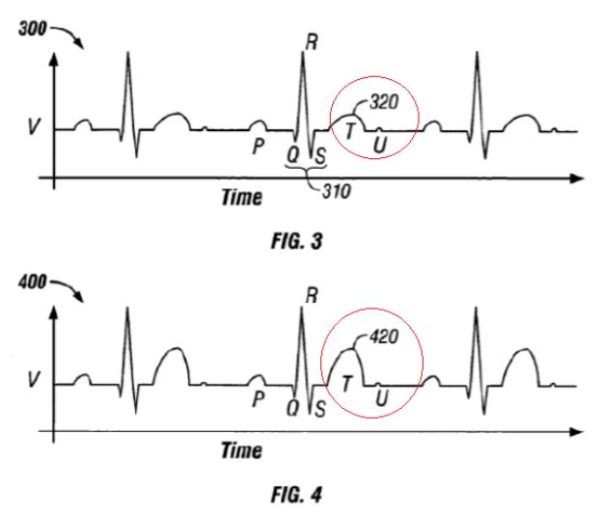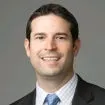PatentNext Summary: Software-based medical devices that focus on "data processing" can be patented. However, a patent practitioner should exercise care when drafting such claims. Otherwise patent eligibility issues can arise. This article demonstrates countervailing Federal Circuit decisions that reached opposite patent eligibility conclusions for a pair of "data processing" medical device patents asserted by Cardionet, LLC against Infobionic, Inc.
The below article provides additional details. This article forms the second part of a multi-part series. The first part, focusing on patent-eligible software-based medical devices (i.e., "particular machines" and those having "underlying improvements"), may be found here: Patenting Software-based Medical Devices (Part 1).
****
Court Analysis of Patents directed to Software-Based Medical Devices
As described in Part 1 of this article series, the U.S. Food and Drug Administration (FDA) categories for software-based medical devices roughly correspond to categories of software-based medical devices as considered by the courts and the United States Patent Office (USPTO), at least from the perspective of patent eligibility.
These two categories are:
- Software in a Medical Device (SiMD), which is "software embedded in a medical device"
- Software as a Medical Device (SaMD), which is "software intended to be used for one or more medical purposes that perform these purposes without being part of a hardware medical device"
SiMD based innovations typically direct to, or incorporate, "physical machines" (e.g., physical components or medical equipment) that the courts and UPSTO have repeatedly found as patent-eligible.
On the other hand, SaMD based innovations typically direct to, or incorporate, less physical aspects, such as data processing, guiding human actions, and laws of nature, which the courts and UPSTO have repeatedly found as patent-ineligible.
The below illustration summarizes this hierarchy, from a best-to-worst ordering:

Across each of these categories an opportunity arises to demonstrate patent eligibility where an inventive software-based medical device is described as providing an "improvement" to an underlying computing device (e.g., underlying medical device). For a general discussion of how to patent software inventions based on an "improvement," see the related article: How to Patent Software Inventions: Show an "Improvement"
This article will explore the third of these categories (i.e.., "data processing"). Part 1 of this article series explored the first two.
"Data Processing" (Part 3)
When properly drafted, patent claims for software-related inventions that involve "data processing" can be patent-eligible (i.e., able to be protected by a patent). For example, as discussed in Part 1 of this article series, the Federal Circuit found the patent claims in the April 17th, 2020 case Cardionet, LLC v. Infobionic, Inc., Case No. 2019-1149 (Fed. Cir. Apr. 17, 2020) to be patent eligible. I will refer to this case as "Cardionet I." The Cardionet I case involved U.S. Patent 7,941,207 (the "'207 Patent").
On the other hand, software-related inventions that involve "data processing" can also be found patent-ineligible (i.e., not able to be protected by a patent). For example, more recently, the Federal Circuit found the claims of a different patent (U.S. Patent 7,099,715, the "'715 Patent") to be patent ineligible in the October 29, 2021 case Cardionet,LLC v. Infobionic, Inc., Case No. 2020-2123 (Fed. Cir. Oct. 29, 2021). I will refer to this case as "Cardionet II."
This article will compare these cases and explore how to draft claims for software-related inventions that involve "data processing."
For comparison, the below table provides both an example claim from each patent, where the claim in Cardionet I is patent eligible, but where the claim in Cardionet II is patent ineligible.
|
Example claim from Cardionet I (Patent Eligible) |
Example claim from Cardionet II (Patent InEligible) |
|
1. A device, comprising: a beat detector to identify a beat-to-beat timing of cardiac activity; a ventricular beat detector to identify ventricular beats in the cardiac activity; variability determination logic to determine a variability in the beat-to-beat timing of a collection of beats; relevance determination logic to identify a relevance of the variability in the beat-to-beat timing to at least one of atrial fibrillation and atrial flutter; and an event generator to generate an event when the variability in the beat-to-beat timing is identified as relevant to the at least one of atrial fibrillation and atrial flutter in light of the variability in the beat-to-beat timing caused by ventricular beats identified by the ventricular beat detector. |
20. A cardiac monitoring apparatus comprising: a communications interface; a real-time heart beat detector; a frequency domain T wave filter; and a selector that activates the frequency domain T wave filter with respect to the real-time heart beat detector in response to a message, wherein the activated frequency domain T wave filter preprocesses a cardiac signal provided to the real-time heart beat detector. |
With respect to the claim of the patent
in Cardionet II (claim 20, as shown above), the
Federal Circuit found the claim
patent ineligible.
The Federal Circuit found claim 20 directed to the "abstract idea of filtering data." At issue was a data filtering step directed to a "T wave." A T wave is a type of cardiac signal that appears in an electrocardiogram ("ECG"). An ECG plots the heart's electrical signals as different waveforms on a graph, which includes P, R, and T waves. Figure 3 and 4 of the patent (reproduced below) illustrate T-waves (as highlighted in red circles):

According to the patent, T waves can cause errors in existing heart monitoring devices. For example, the specification explains that in a normal heartbeat, the R wave is taller than the T wave (as shown in Figure 3 above). However, some patients have "abnormal[ly]" tall T waves (as shown in Figure 4 above). As a result, the ECG may mistakenly classify them as R waves. Because of that misclassification, the ECG can incorrectly report an inaccurately high heart rate.
Thus, the patent's claims directed to "data processing" of an ECG e.g., i.e., with claim 20 reciting of "activat[ing]" the "T wave filter" to "preprocess[] a cardiac signal," in order to filter our the T wave.
The patentee tried to argue that claim 20 was akin to claim 1 of Cardionet I, which was found to be patent-eligible. However, the Federal Circuit disagreed: "[t]hat case (involving the same parties here) concerned a patent with claims to a system that detects different types of cardiac arrythmias by measuring heartbeat variability."
The Federal Circuit distinguished Cardionet I and II by focusing on the difference in prior art use: "[i]mportantly, [in Cardionet I] we observed that there was no intrinsic evidence that the claimed technique had ever been used." By contrast, T-wave filters, which were at issue in Cardionet II, had existed in the prior art.
No Underlying Improvement to a Computing Device
The patentee also argued that the patent directed to an improvement. However, the Federal Circuit disagreed. Instead, according to the court, claim 20 merely recited "a general-purpose computer to carry out the abstract idea of filtering data."
Moreover, the specification failed to describe how such activity demonstrated an "improvement" to an underlying computing device. Instead, according to the court, the specification merely directed to general purpose "data processing": "the specification explains that the very purpose of the invention centers on using the T wave filter to filter data."
The court reiterated the test for patent-eligibility, which claim 20 failed to meet: "[t]o qualify as a patent-eligible improvement, the invention must be directed to a specific improvement in the computer's functionality, not simply to use of the computer 'as a tool' to implement an abstract idea."
Accordingly, the Federal Circuit found that: "at bottom, filtering the data requires only basic mathematical calculations." And "such calculations, even if groundbreaking, are still directed to [a patent-ineligible] an abstract idea."
No "Particular Machine" – Only General Purpose Computer elements
Finally, the patentee argued that the recitation of a machine (i.e., the cardiac apparatus of clam 20) demonstrated that the claim was patent eligible under the machine-or-transformation test.
However, the Federal Circuit reminded the patentee that the machine-or-transformation is merely a test, and is not itself dispositive of patent eligibility: "satisfying the machine-or-transformation test, by itself, is not sufficient to render a claim patent-eligible" because not all "transformations or machine implementations infuse an otherwise ineligible claim with an 'inventive concept.'" Instead, the "machine-or-transformation test is a "useful and important clue" for determining patent eligibility, but not dispositive."
The court found that claim 20's remaining hardware components were merely conventional, and did not provide a basis for patent eligibility. The court found that claim 20's "ultimate focus is to "preprocess[] a cardiac signal" using a "T wave filter," which is merely an abstract idea."
The fact that the T wave filter was recited as part of an apparatus did not save the claims: "To the extent that formulating a claim in the form of an apparatus insulates it from an ineligibility attack if it only recites conventional components for performing an abstract idea, the Supreme Court has closed that door, at least for now."
Finally, none of the remaining claim elements could save the claims, where the court found that remaining claim elements merely recited "conventional components (a monitoring apparatus and monitoring station) performing the same type of conventional functions: collecting data, analyzing it with the T wave filter's mathematical calculations, and displaying it on the monitoring station."
Thus, without finding an "improvement" to an underlying computing device, or use of a "particular machine," the court found the patent-at-issue patent ineligible.
Practice tip: When drafting claims for software-based medical devices that involve "data processing," such claims should include one or more elements that can be used to demonstrate an underlying improvement to an underlying computing device, or otherwise operate on a "particular machine" (and not a mere general purpose computer). Otherwise issues as to patent eligibility can arise.
The content of this article is intended to provide a general guide to the subject matter. Specialist advice should be sought about your specific circumstances.

